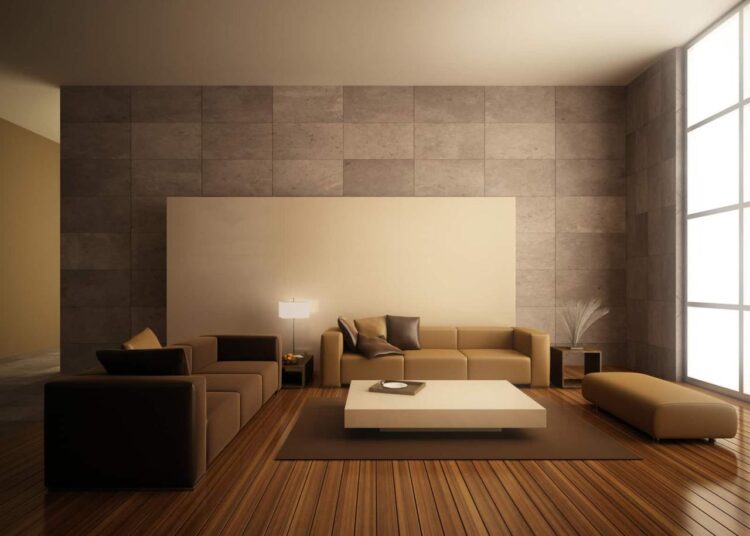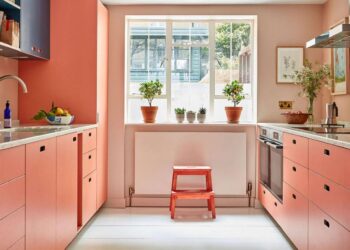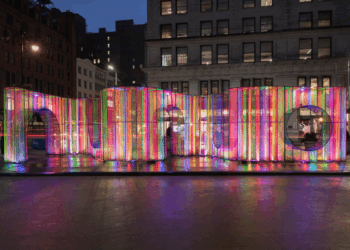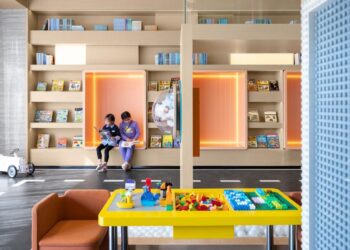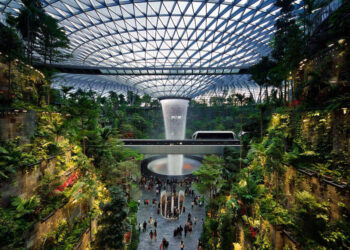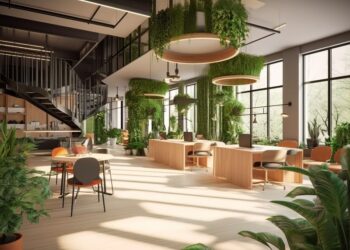The Roots of Minimalism
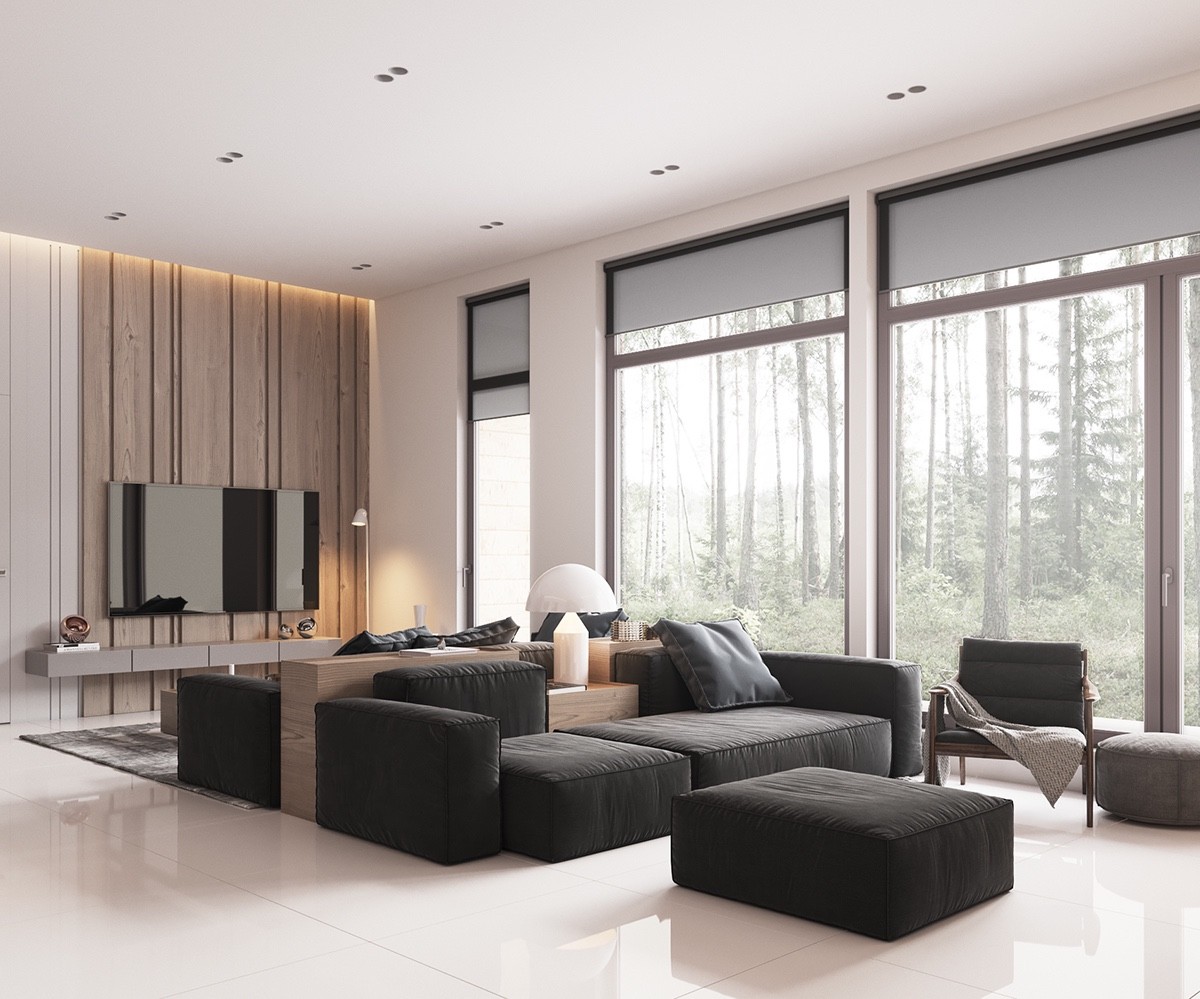
To truly understand why minimalism has become so dominant in design, it’s important to delve into its historical and philosophical underpinnings. Its current manifestation is a response to, and a continuation of, various movements throughout history.
A. Artistic Beginnings (Mid-20th Century):
A. Abstract Expressionism Counter-Movement: Minimalism emerged as a reaction against the emotional intensity and subjective expression of Abstract Expressionism in the visual arts. Artists like Donald Judd, Frank Stella, and Carl Andre sought to strip away superfluous elements, focusing on pure forms, lines, and colors. Their work was often characterized by geometric shapes, repetitive structures, and industrial materials, emphasizing the object itself rather than the artist’s emotion.
B. De Stijl and Bauhaus Influences: Earlier movements like De Stijl (e.g., Piet Mondrian) and the Bauhaus school laid foundational principles for minimalism. They championed functionalism, clean lines, geometric purity, and a rejection of ornamentation, believing that form should follow function. These principles heavily influenced architecture and industrial design.
B. Japanese Aesthetics (Zen and Wabi-Sabi):
A. Zen Buddhism: The philosophical principles of Zen Buddhism, particularly its emphasis on simplicity, clarity, self-control, and the beauty of emptiness (Ma), profoundly influenced minimalist aesthetics. It teaches that true beauty lies in the absence of the unnecessary, allowing space for contemplation and inner peace.
B. Wabi-Sabi: This traditional Japanese aesthetic celebrates imperfection, impermanence, and incompleteness. It finds beauty in natural processes, weathered materials, and understated elegance, resonating deeply with the minimalist appreciation for authenticity and humble materials.
C. Post-War Efficiency and Mass Production:
A. Resource Scarcity: In the aftermath of major conflicts, resource conservation and efficient production became paramount. This led to designs that were economical, functional, and devoid of excess.
B. Industrial Design: The rise of mass production necessitated designs that were easy to manufacture, durable, and adaptable. This often translated into simple forms and standardized components.
D. The Digital Age and Overload:
A. Information Overload: In the 21st century, we are bombarded with information, choices, and material possessions. Minimalism offers a respite from this sensory and cognitive overload, providing mental clarity.
B. Digital Minimalism: The principles extend beyond physical spaces to digital life, encouraging conscious consumption of digital content and decluttering virtual spaces.
Core Principles of Minimalist Design
Minimalism in design is not about having nothing; it’s about having just enough of the right things. It’s a highly intentional approach guided by several key principles.
A. Simplicity in Form and Function
The cornerstone of minimalist design.
A. Clean Lines and Geometric Shapes: Emphasizing straight lines, sharp angles, and fundamental geometric forms (squares, rectangles, circles) creates a sense of order and serenity.
B. Uncluttered Surfaces: Keeping surfaces clear of excessive ornamentation or unnecessary objects allows the eye to rest and creates a sense of spaciousness.
C. Focus on Functionality: Every object and every element of the design should serve a clear purpose. If it doesn’t add value or function, it’s often removed.
D. Seamless Integration: Built-in storage, hidden appliances, and flush doors contribute to a sleek, uninterrupted aesthetic.
B. Muted Color Palettes
Color plays a crucial role in creating a calming and expansive minimalist environment.
A. Neutral Tones: Whites, off-whites, grays, and natural beige tones form the foundation, reflecting light and creating an airy feel.
B. Subtle Accents: When color is introduced, it’s typically through carefully chosen accent pieces – a single vibrant artwork, a natural wood element, or a plant.
C. Monochromatic Schemes: Utilizing various shades and textures within a single color family (e.g., different shades of gray) adds depth without visual clutter.
C. Thoughtful Material Selection
Minimalism celebrates the inherent beauty of materials themselves, often opting for natural or industrial finishes.
A. Natural Materials: Wood (light and dark), concrete, stone, linen, cotton, and wool are favored for their authentic textures and inherent warmth.
B. Industrial Materials: Steel, glass, and polished concrete are often used for their clean, modern aesthetic and durability.
C. High Quality over Quantity: Investing in fewer, high-quality pieces made from durable materials ensures longevity and reduces the need for frequent replacement, aligning with sustainable practices.
D. Texture for Depth: Instead of relying on patterns or multiple colors, texture (e.g., a rough concrete wall, a smooth wooden table, a textured linen sofa) adds visual interest and warmth.
D. Strategic Use of Light and Space
Light and space are not just backdrops; they are active design elements in minimalism.
A. Maximized Natural Light: Large windows, skylights, and open layouts allow abundant daylight to flood the space, making it feel larger, brighter, and more inviting.
B. Deliberate Artificial Lighting: Artificial lighting is often subtle, recessed, or takes the form of minimalist fixtures that blend into the architecture. It’s used to highlight specific features or create mood, rather than to be a dominant design element itself.
C. Emphasis on Open Space: Negative space (empty areas) is intentionally preserved to create a sense of calm, allow visual breathing room, and prevent overwhelming the senses.
D. Minimal Furniture: Fewer pieces of furniture, strategically placed, define zones without creating visual barriers, enhancing the feeling of openness.
E. Emphasis on Quality and Durability
The “less but better” philosophy is central to minimalist design.
A. Investment in Longevity: Choosing well-crafted, durable items that will stand the test of time, reducing the need for constant replacement.
B. Timeless Design: Opting for pieces with classic, enduring designs that won’t quickly go out of style.
C. Sustainable Choices: High-quality, durable items often align with sustainable principles, reducing waste and consumption.
Minimalism in Residential Design
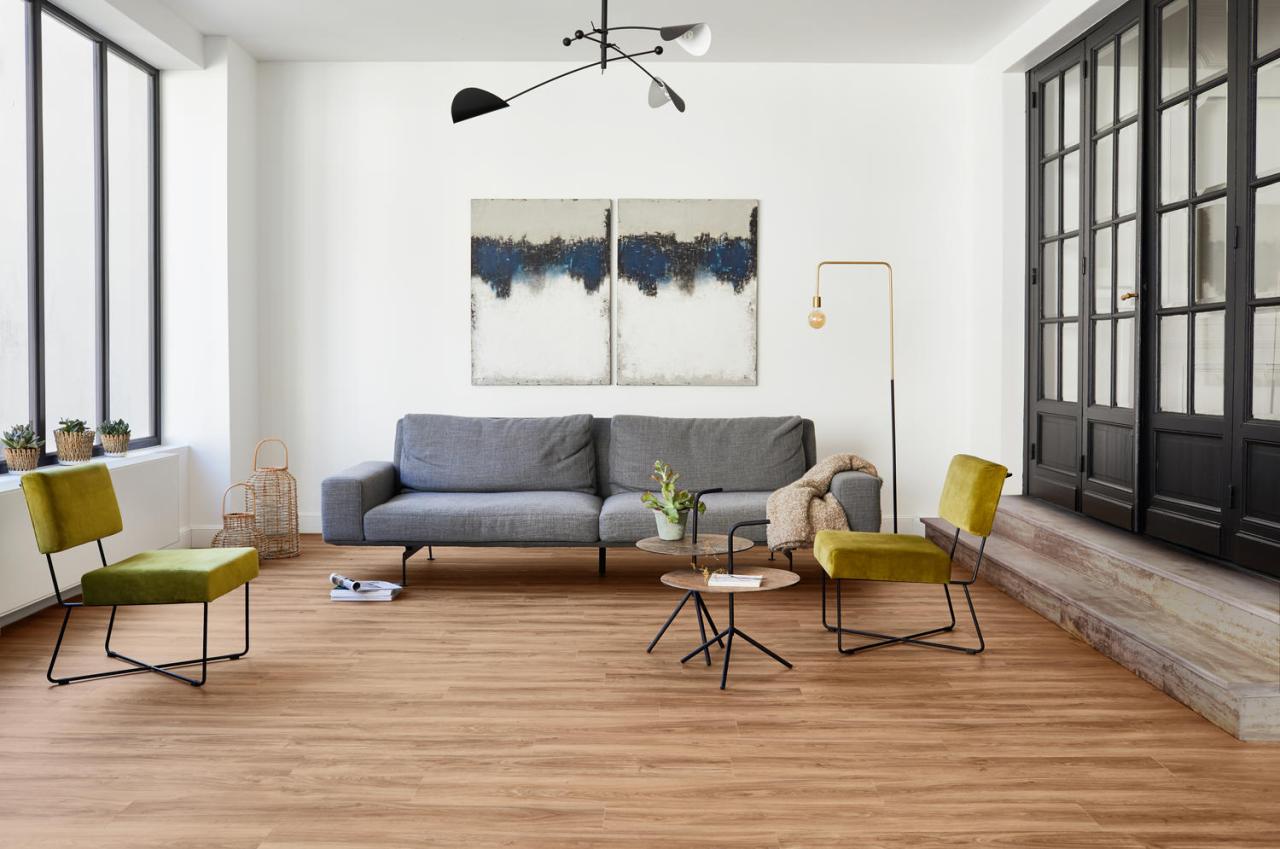
The home is where minimalist principles have perhaps had the most profound impact, transforming living spaces into serene sanctuaries.
A. Living Rooms
A. Streamlined Furniture: Low-profile sofas, armless chairs, and simple coffee tables. Often upholstered in neutral fabrics.
B. Hidden Storage: Built-in shelving units, media consoles with integrated storage, and ottomans that double as storage.
C. Minimal Decor: A few carefully chosen pieces of art, a single vase with fresh flowers, or a sculptural object. Surfaces are kept largely clear.
D. Open Floor Plans: Spaces flow seamlessly into one another, enhancing light and spaciousness.
B. Kitchens
A. Integrated Appliances: Refrigerators, dishwashers, and ovens often feature panels that match the cabinetry, creating a continuous, flush look.
B. Handle-less Cabinetry: Push-to-open or recessed handles maintain sleek lines and an uncluttered appearance.
C. Neutral Palettes and Natural Materials: White, gray, or wood cabinetry with natural stone or concrete countertops.
D. Efficient Layouts: Focus on highly functional layouts that minimize movement and maximize workflow.
E. Hidden Storage Solutions: Pantry pull-outs, drawer organizers, and overhead cabinetry extending to the ceiling for maximum storage efficiency.
C. Bedrooms
A. Calming Atmosphere: Emphasis on creating a tranquil retreat for rest and rejuvenation.
B. Platform Beds: Low-profile beds with simple frames, often without headboards or with minimalist ones.
C. Minimal Furnishings: Bed, nightstands, and a dresser or built-in wardrobe.
D. Soft, Neutral Linens: Crisp white, gray, or natural-toned bedding.
E. Reduced Clutter: Nightstands are kept clear, and clothing is neatly stored away.
D. Bathrooms
A. Floating Vanities: Wall-mounted vanities create a sense of openness and make cleaning easier.
B. Walk-in Showers with Glass Panels: Eliminates shower curtains and creates a spacious feel.
C. Large-Format Tiles: Fewer grout lines contribute to a clean, seamless look.
D. Recessed Lighting and Fixtures: Minimalist faucets and showerheads that blend into the wall.
E. Hidden Storage: Medicine cabinets integrated into walls, or simple open shelving for essentials.
Minimalism in Commercial Design
Beyond the home, minimalism has significantly influenced commercial spaces, aiming to enhance focus, productivity, and brand identity.
A. Offices
A. Clean Workstations: Uncluttered desks, often shared (hot-desking), with minimal personal items.
B. Open and Flexible Layouts: Promotes collaboration and adaptability, with distinct zones for focused work, meetings, and informal gathering.
C. Biophilic Elements (Subtle): A few well-placed large plants, natural wood accents, and maximized natural light to enhance well-being without overwhelming the space.
D. Neutral Color Schemes: White walls, gray carpets, or concrete floors create a calm backdrop, allowing brand colors to be introduced subtly.
E. Integrated Technology: Hidden cables, recessed power outlets, and minimalist tech accessories maintain a tidy appearance.
F. Acoustic Solutions: Use of sound-absorbing panels and materials that blend seamlessly into the minimalist aesthetic.
B. Retail Spaces
A. Product as Art: The minimalist approach allows products to take center stage, often displayed individually or in small, curated collections, turning them into artistic focal points.
B. Clean Backgrounds: White walls, polished concrete floors, and unobtrusive fixtures highlight the merchandise.
C. Strategic Lighting: Focused spotlights draw attention to products, while ambient lighting creates a sophisticated atmosphere.
D. Spacious Layouts: Ample negative space prevents customers from feeling overwhelmed and encourages thoughtful Browse.
E. Brand Reinforcement: The minimalist aesthetic often reflects a brand’s commitment to quality, simplicity, and sophistication.
The Broader Impact of Minimalist Design
The dominance of minimalist trends extends beyond individual rooms and buildings, influencing broader aspects of society and culture.
A. Sustainability and Conscious Consumption
A. Reduced Waste: By encouraging investment in fewer, higher-quality items, minimalism combats the throwaway culture and reduces landfill waste.
B. Lower Carbon Footprint: Less manufacturing, less shipping, and often the use of natural, durable materials contribute to a smaller environmental impact.
C. Longevity and Durability: The emphasis on well-made, timeless pieces means products have a longer lifespan, reducing the need for frequent replacements.
D. Focus on Needs over Wants: Minimalism encourages a more mindful approach to consumption, distinguishing between essential needs and superfluous desires.
B. Mental Well-being and Productivity
A. Reduced Visual Clutter: A decluttered environment leads to a decluttered mind, reducing cognitive load and improving focus.
B. Stress Reduction: Simplified spaces promote a sense of calm and order, lessening anxiety often associated with chaotic surroundings.
C. Increased Focus: With fewer distractions, individuals can concentrate more effectively on tasks, leading to enhanced productivity.
D. Sense of Control: Curating one’s environment provides a feeling of agency and control, contributing to overall mental well-being.
C. Economic Implications
A. Cost Savings (Long-Term): While initial investment in quality pieces might be higher, reduced consumption and longer product lifecycles lead to long-term savings.
B. Resale Value: Well-designed, minimalist furniture and decor often retain their value better due to their timeless appeal and quality.
C. Efficiency in Commercial Spaces: Streamlined office designs can lead to more efficient use of space, potentially reducing rental costs or allowing for more employees in a given area.
D. Digital Minimalism
A. Streamlined User Interfaces (UI): Software and app design increasingly prioritize clean interfaces, minimal icons, and intuitive navigation, reducing cognitive load for users.
B. Content Prioritization: Websites and digital platforms often adopt minimalist layouts to highlight core content and calls to action, improving user experience and conversion rates.
C. Reduced Notifications and Distractions: Applying minimalist principles to digital habits involves consciously limiting notifications, unsubscribing from unnecessary emails, and curating social media feeds to reduce digital clutter and improve focus.
Challenges and Misconceptions of Minimalism
Despite its many benefits, minimalist design isn’t without its critiques and misunderstandings.
A. Perceived Coldness or Impersonality: A common misconception is that minimalism equates to stark, sterile, or unwelcoming spaces. In reality, warmth can be introduced through natural materials, varied textures, and strategic lighting.
B. Lack of Personality: Some argue that a minimalist approach stifles personal expression. However, true minimalism allows personality to shine through carefully chosen, meaningful objects rather than overwhelming clutter.
C. Impracticality for Families: Families with children might find strict minimalism challenging. However, it can be adapted by focusing on smart, hidden storage and durable, easy-to-clean materials.
D. Maintenance Demands: While less clutter means less to clean, the emphasis on pristine surfaces can mean that dirt and dust are more noticeable, potentially requiring more frequent cleaning.
E. Initial Investment: High-quality, durable minimalist pieces can be expensive upfront, posing a barrier to entry for some.
F. Misinterpretation as Austerity: Minimalism is sometimes confused with living without, rather than living with intention. It’s about discerning what adds value, not merely sacrificing possessions.
The Future of Minimalism
Minimalism is not static; it’s an evolving concept that will continue to adapt to new technologies and societal needs.
A. Tech Integration: As technology becomes more seamless and less obtrusive, it will integrate further into minimalist designs. Think of invisible speakers, projectors that replace TVs, and smart home controls that are completely hidden from view.
B. Sustainable Minimalism: The emphasis on ethical sourcing, circular economy principles, and truly sustainable materials will intensify, moving beyond just “less” to “less harmful.”
C. Personalized Minimalism: The rise of AI and personalized living will allow for minimalist spaces that are highly tailored to individual preferences and habits, without compromising the clean aesthetic.
D. Adaptability and Modular Design: Furniture and architectural elements will become even more modular and reconfigurable, allowing spaces to adapt easily to changing needs without adding clutter.
E. Sensory Minimalism: Beyond visual simplicity, there will be a growing focus on minimizing auditory and olfactory distractions, creating truly serene multi-sensory environments.
Conclusion
The enduring appeal of minimalism in design stems from its ability to offer a sanctuary in a chaotic world. It provides a framework for creating spaces that are not just aesthetically pleasing but also profoundly supportive of human well-being, productivity, and a more sustainable way of living. As we move forward, its principles will likely continue to inform our choices, shaping environments that are cleaner, calmer, and more intentional, ultimately leading to a richer and more fulfilling existence. It’s a testament to the power of less, where simplicity truly breeds sophistication and peace.

